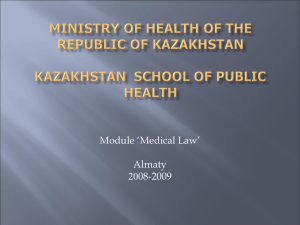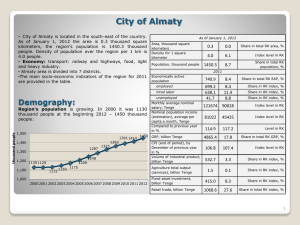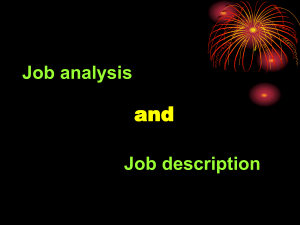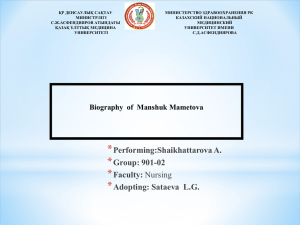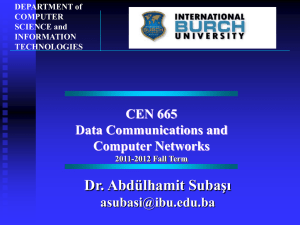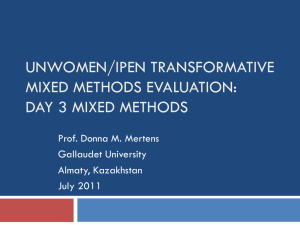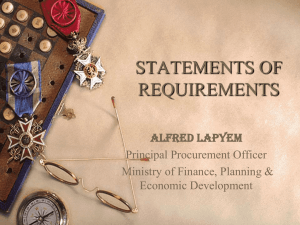Model based conformance testing of communication
advertisement
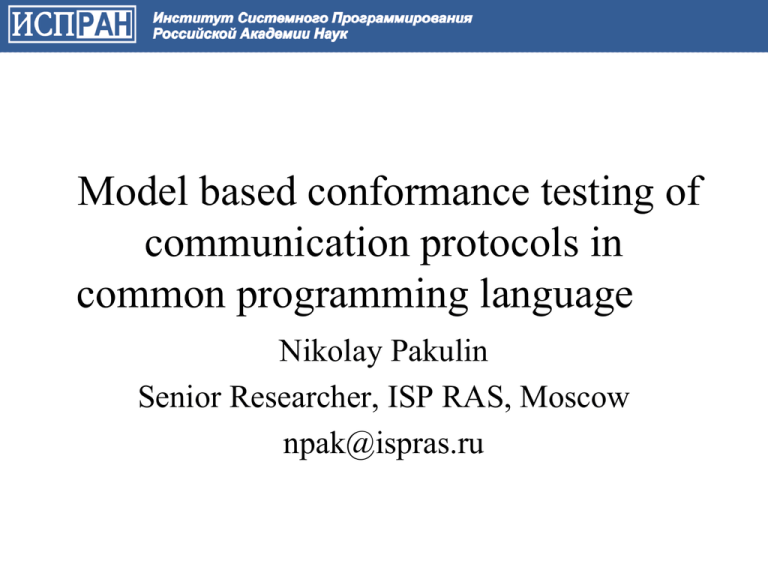
Model based conformance testing of
communication protocols in
common programming language
Nikolay Pakulin
Senior Researcher, ISP RAS, Moscow
npak@ispras.ru
Conformance testing of Telecom
Protocols
• Protocol: a set of data representations,
message formats, message exchange and
processing rules ensuring information
exchange between computing systems
– Internet (Ethernet, IP, TCP, UDP, HTTP, …)
– Telephony (GSM, UMTC, WiMAX, …)
– Control (Modbus, Profibus, …), Avionics
(AFDX, …), Automotive (CAN, IAS, …)
–…
10.05.2012
Information Technologies and
Management, Almaty
2
Conformance testing of Telecom
Protocols
• Conformance testing: complex of active
studies of protocol implementations to
evaluate the degree of compliance with
protocol specifications
– Hypothesis of well-designed protocols: any
conformant implementations under normal
conditions always communicate. No deadlocks,
livelocks, format ambiguities, etc.
10.05.2012
Information Technologies and
Management, Almaty
3
Industrial Methodology
Test Suite
Tests
TP
TP
• Test Suite is comprised of separate test
cases
• Test purposes informally define
situations to be tested. A test purpose
corresponds to one or more test cases
• Implementation is considered
conformant when all tests pass – all
test purposes are ‘covered’
TP
10.05.2012
Information Technologies and
Management, Almaty
4
Industrial Approach to Conformance
Testing
Test case
Test System
SUT
preambule
input
reaction1
alt
– Little level of code reuse, lots of
duplicated code
• ISO 9646, TTCN
– Further development: TTCN2,
TTCN3, UML Testing Profile
– TAHI (Perl + C++), ETSI (TTCN3 +
Java)
pass
reaction2
inconc
fail
postambule
10.05.2012
• Manual test cases
• Verdicts are not based on a
formal protocol specification
• Test coverage is informal
• Automation is not intended
• Thousands of test cases for reallife protocols
Information Technologies and
Management, Almaty
5
Model-Based Testing
Protocol
Specification
Formal Specification
(Model)
Requirements
modeling
10.05.2012
Test Suite
Test
Construction
Information Technologies and
Management, Almaty
6
Model-Based Testing
• Tests are constructed from a model of the protocol in automated
fashion
• Models capture requirements from the protocol specification
– Machine readable, unambiguous
– = Formal Specification
• Test construction is
–
–
–
–
Nearly exhaustive
With well-defined coverage
Trackable to the initial specification through model
Less amount of manual code compared to manual test case development
• Testing effort and quality
– up to 5 times less than manual test case development
– Better test coverage
10.05.2012
Information Technologies and
Management, Almaty
7
Practitioners’ Requirements to
MBT
• Models
– Comprehensible, easy to read
– Straightforward, easy to write
• Test generation
– Modular: produce tests for separate features
– Comprehensive: easy to read
– Reproducible: tests for same SUT should behave in the same
way
– Trackable: detailed logs for post-mortem analysis
• Ease of use
– Accessible tools
– Reasonable labor cost
10.05.2012
Information Technologies and
Management, Almaty
8
Approaches to MBT
• Using special-purpose languages for models (SDL,
LOTOS, VDM …)
– Not easy to read, not easy to write, expensive and rare tools
• Using graphical notations (UML + constraints)
– Difficult to develop complete models for real-life protocols
– Limited tool support
• Using programming languages
– Java Markup Language
– NModel – pure C#
– SpecSharp – extension of C#
• Integrated with MS Visual Studio!
10.05.2012
Information Technologies and
Management, Almaty
9
Approaches to MBT
• Fully automated test construction
– Solvers require linear constraints, no maps, sets, lists, etc.
– State explosion problem: small (impractical) protocols only
• Or tricky manual adjustments
• Model exploration
– Long test sequences
– Random walk – irreproducible results
• On-the-fly test generation
– No need for solvers
– Test sequence implementation dependent
10.05.2012
Information Technologies and
Management, Almaty
10
PyTESK: MBT in Python
• PyTESK is a Python library
– Behavior modeling: contracts, EFSM, message sequencing
– Model composition: processes, channels, message exchange
– Test construction: traversal of a state machine on-the-fly
• Why Python
– Clean language with simple grammar, well documented
– Powerful extension mechanism, rich library
– Widespread: tools, books, tutorials
• Alternatives:
– Perl (write-only language),
– Ruby (poorly documented, less tools)
– Java, C# - complex languages
10.05.2012
Information Technologies and
Management, Almaty
11
PyTESK Models
# State machine model: transition
@Transition
@From('DATA_SENT')
@On(Ack, number = Self.number)
@When(Self.last_block)
def last_block_confirmed(self, msg):
self.timer.reset()
# File transmission finished
# Inform upper layer
self.application_channel.put(ServerFinished())
10.05.2012
Information Technologies and
Management, Almaty
12
PyTESK Models
• Contract specification: obligations between
caller and callee
@Requires(Arguments.sum > 0)
@Ensures(If(Pre.balance - Args.sum < -Self.limit).Then(Result == 0))
@Ensures(If(Pre.balance - Args.sum >= -Self.limit).Then(Result ==
Args.sum))
@Ensures(Pre.balance - Result == Self.balance)
@Save(balance = Self.balance)
def withdraw(self, sum):
…
10.05.2012
Information Technologies and
Management, Almaty
13
Test
State Machine
Test State
Test Construction
Apply Test
Action
FSM
Traversal
Test
Actions
Iterator
• Test sequence is constructed on the fly
– As traversal of a state machine
• Manual definition of test state and test actions
10.05.2012
Information Technologies and
Management, Almaty
14
Test Specification in Python
@Test
@Param(sum = ( 1, 2, 3,
Self.account.limit,
2*Self.account.limit))
@Guard( Arguments.sum > 0,
Self.account.balance < 3)
@Coverage(Self.cov_deposit)
@DependsOnMethods('withdraw')
def deposit(self, sum):
…
10.05.2012
Information Technologies and
Management, Almaty
15
Discussion
• PRO
– Easy to use language for behavior models and test generator
– Compact test definition
– Integrated into Eclipse (editor, debugger)
• CONS
–
–
–
–
Dynamic language – model checking?
Dynamic language – offline test generation?
Extra effort for model and test development
How to debug models and tests?
• PENDING
– Reporting, test results analysis
10.05.2012
Information Technologies and
Management, Almaty
16
Conclusion
• Model-based testing for thorough testing
– Conformance testing
– Certification
• Reduce costs of such testing
• Lightweight formal methods
10.05.2012
Information Technologies and
Management, Almaty
17

